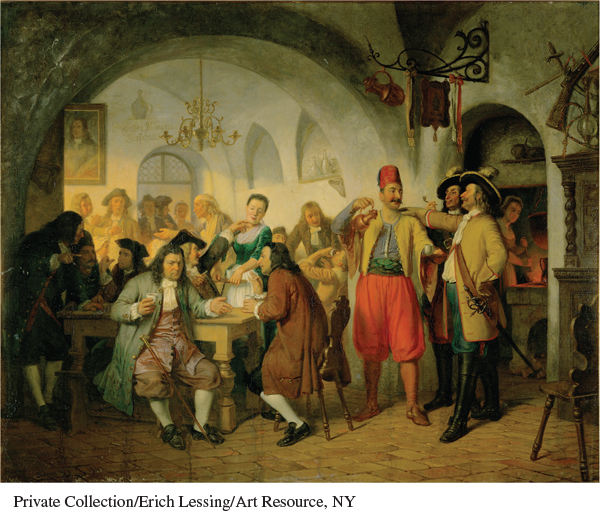A History of Western Society AP®: Printed Page 464-a
AP® Period 2: Introduction c. 1648–c. 1815
AP® PERIOD TWO
Early Modern Transformations
c. 1648–

In this text, you will find two different abbreviations for the word circa. Circa means “around” or “approximately” when referring to a date. The authors use ca. uniformly throughout their narrative and in chapter titles (such as Chapter 15). The College Board uses c. in the AP® European History Curriculum Framework, so you will see c. in the period-
CHAPTERS
Pages 464-
The second part of the early modern period stretches from the Peace of Westphalia in 1648 to the Congress of Vienna in 1814–
The houses of nobles and wealthy merchants were lavish and immense, with separate rooms where each family member could find privacy from servants and from each other. The homes of artisans were much plainer, and the poor were crammed into attics and cellars, but even artisans and servants could afford parasols and pocket watches, and an occasional visit to a café to read newspapers and discuss current issues. Among these issues were ideas about rationalism, progress, and values that both challenged and bolstered existing hierarchies. The countryside outside of cities changed far less. There traditions, customs, and ideas were still taught through the spoken word; stories and songs were shared orally; and natural, supernatural, and human-
Wars in Europe were fought no longer for religion, but instead for political power, though this did not make them any less frequent, and the armies that fought them were larger and better equipped. Expanding wealth, much of it from colonial empires, allowed some individuals and some families to increase their social stature, but generally did not upset a hierarchy in which being born noble was the best assurance of power and prosperity. Only at the very end of this period would economic, political, and social grievances, combined with new ideas about reason and freedom, lead to revolutions, first in North America, then in France, and then in what became Haiti.